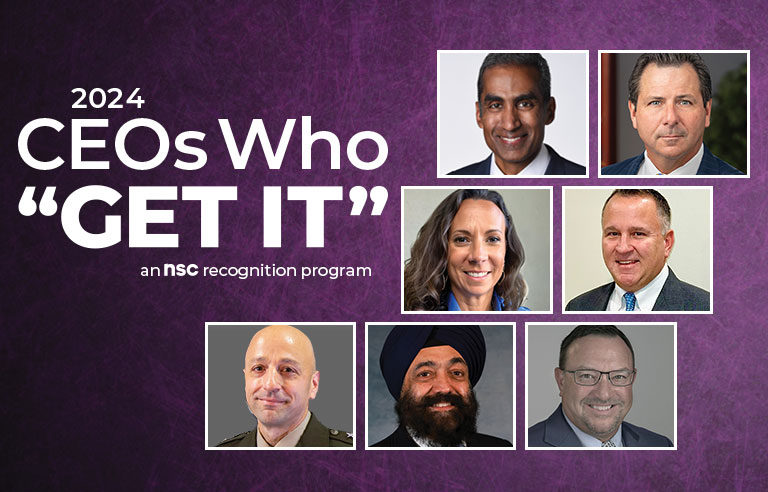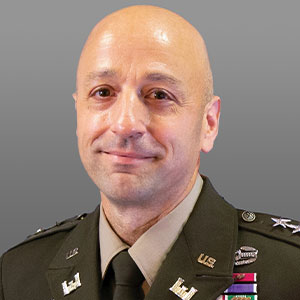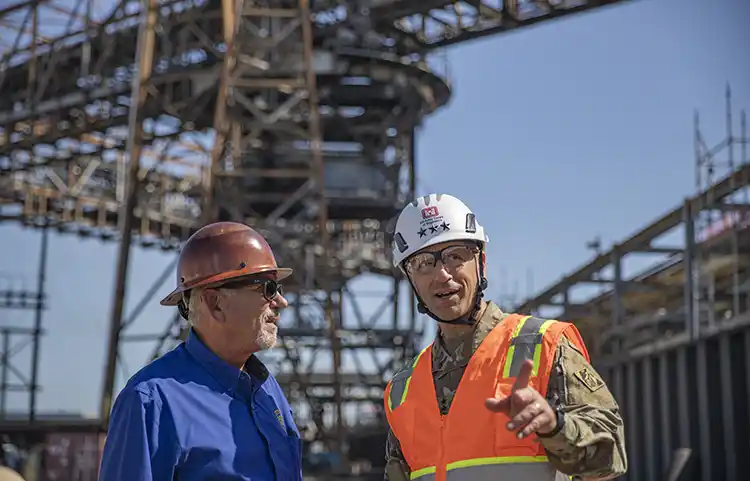2024 CEOs Who "Get It"


Lt. Gen. Scott Spellmon
Commanding General, U.S. Army Corps of Engineers55th Chief of Engineers, U.S. Army
Washington, D.C.
Our mission is to deliver public and military engineering services and partners to strengthen our nation’s security, energize the economy and reduce risks from disasters. The Army Corps’ major programs include civil works, military programs, and research and development. The civil works mission is to provide quality, responsive service to the nation and includes water resource development activities. USACE consists of 36,000 civilians and 800 military personnel stationed across the United States and in 130 other countries, providing reimbursable engineering expertise to the nation and throughout the world.

Describe your personal journey to becoming a CEO who “gets it.”
Safety is ingrained in the U.S. Army and in all our leadership development programs. We are taught the importance of safety in all that we do, from our time as second lieutenants to our time as lieutenant generals. In the early years of my career, I saw firsthand the profound influence a safety-oriented culture can have on both an organization’s success and its most valuable asset: its people.
Today, the U.S. Army Corps of Engineers is working to deliver its highest-ever workload in our 249-year history, and I was not proud of our safety performance during my first year as the chief of engineers. We were inconsistent in our application of safety basics on our many worksites across the globe.
We collectively had to reinforce that safety isn’t merely a checkbox, but a foundational element of effective leadership. As leaders, we must set conditions for success, which we define as safely delivering quality projects on time and within budget. If we’re not safe, we’re not meeting our mission.
Why is safety a core value at USACE?
Safety is a core value at USACE because we are about people. We owe it to our workforce to take care of them, and we owe it to our contractors to make sure they can go home and have dinner with their families. We recognize the well-being of our employees is paramount to our success. Beyond regulatory compliance, we view safety as a moral imperative and a strategic investment. A safe workplace not only protects our team members but enhances productivity, employee morale and our reputation as a responsible and caring organization.
What’s the biggest obstacle to safety at USACE?
I found that culture is the biggest obstacle – and this is rooted in the way people think. I also learned that we are not alone. On this journey, I spoke with the vice president at Boeing, and many CEOs of our construction industry partners who were on their own safety journey in their organizations. For USACE, it requires a change in thinking – and often, people are reluctant to embrace change. That can hinder the implementation of safety improvements.
I believe safety is a team sport. The women and men who come to work for U.S. Army Corps of Engineers must embrace our safety methodology, which is required by regulation and embraced by our leadership. This culture fully integrates safety and occupational health functions into all our business operations to ensure risk is managed properly and at the correct level.
This is all in service to reducing injuries and illnesses of our employees and contractors.
I believe a leader must visibly and consistently demonstrate their commitment to safety.
I prioritize sharing success stories and examples of how safety changes have positively impacted other units within our enterprise.
How do you instill a sense of safety on an ongoing basis?
We instill a sense of safety through a multifaceted approach. I consistently convey the significance of safety to my leaders every week through a reoccurring and real-time incident and injury dashboard. I’ve established the framework and provided motivation for leaders to implement and embrace a safety and occupational health management system. This initiative has notably changed our culture of safety, enhanced leader engagement and empowered employees to proactively identify and address potential hazards. Leading by example and integrating safety into our everyday operations reinforce the message that safety is not just a priority but a shared responsibility.
How does USACE measure safety?
At our organization, we measure safety through leading and momentum indicators such as near-miss reporting, proactive safety audits, continuous safety training and best practices, which help us anticipate and address potential issues before they escalate. We also use lagging indicators such as incident and injury trends and findings and recommendations from incident investigation boards briefed by local commanders. Room for improvement lies in enhancing our leading indicator systems and further integrating them into our overall safety strategy.
What role do off-the-job safety, mental health and well-being play in USACE’s overall safety program?
We recognize the well-being of our employees is critical within and beyond the workplace. We have trained and talented critical incident stress management response teams that are trained in psychological first aid to assist employees in reducing initial distress from traumatic events. The teams respond in record time anywhere in the world to help those in need increase their level of adaptive functioning and new coping skills. By addressing off-the-job safety and mental health, we aim to create a holistic approach that contributes to the overall safety and well-being of our team members, reinforcing safety is an imperative.
Off-the-job safety is important to us, as USACE is the leading provider of water-based recreation nationwide on all federally managed public lands and attracts 250 million visitors every year. To ensure the safety of our visitors, we conduct educational programs such as the Life Jackets Worn, Nobody Mourns campaign to teach the public safe and responsible ways to enjoy the waters. We integrate mental health outreach as an integral component of our overall safety program.
Post a comment to this article
Safety+Health welcomes comments that promote respectful dialogue. Please stay on topic. Comments that contain personal attacks, profanity or abusive language – or those aggressively promoting products or services – will be removed. We reserve the right to determine which comments violate our comment policy. (Anonymous comments are welcome; merely skip the “name” field in the comment box. An email address is required but will not be included with your comment.)


